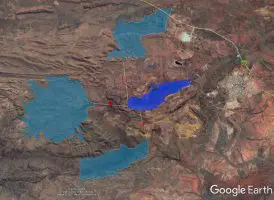- Volumes : were soft this week, down 2% in the NEM (although the South Aust, data is still unclear) and 4% in NSW. Volumes are generally soft in Spring but across the NEM were back at 2014 levels.
- Future prices:. Weakened this week pretty much across the board. An announcement on Hazelwood is expected either this week or next. Assuming Hazelwood does announce closure the two remaining questions are what happens to Portland and where the energy that Hazelwood produces will come from. We think market sentiment is that Queensland generators may end up shouldering some of the Hazelwood load for a couple of years.
- Spot electricity prices. Were up strongly in NSW compared to PCP although never getting quite to $300 cap level (high price of $295). The Eraring power station was completely offline for maintenance from 8 October which likely explains this.
- REC spot prices increased marginally and are trading round the pretax cap short term. We remain totally convinced that the REC target is the wong way to decarbonize electricity at minimum cost. Every State review that looks at it, ACT, Victoria, Queensland, all favour reverse auctions.
- Gas prices : traded at around A$6 GJ in all States. I guess the key here is that at $6 Gj gas fired electricity in Queensland is economic for the afternoon peak load, always assuming that the gas is physically available. That said we still output from Darling Downs power station continuing to fall over the next few months as the gas has been physically sold. Same as with Pelican Point.
- Utility share prices: were generally weak as was the broader market. In general investors look at utilizes for their dividends and yield. At the moment the global market is going through one of its periodic excitement phases about rising USA interest rates at both the short and long end and this tends to drive down the share prices of all yield related stocks. In general many fund managers dislike having to chase yield and so they are happy for this trend to continue.
- Industry news. No industry news of note this week, but we observe that the Full Federal Court appeal hearing against the Australian Competition Tribunal [ACT] decisions against the AER in the Ausgrid et alia case take place this week. Also the Hazelwood formal decision could take place.
- Electricity retail discounts We reviewed our data here and found that, at least in AGL’s online offers there has been no change in disounts since July. In our opinion electricity retailing in Victoria remains more profitable than in NSW. We calculate this by backing out the uncontrollable network costs from the discounted retail price. See Fig 11. Churn has nevertheless picked up in NSW, but remains well below Victoria after adjusting for population. (Fig 12)
Share Prices


Volumes

Base Load Futures
Gas Prices

Retail electricity discounting
We monitor discounting competition by looking at AGL’s online retail offer. Other retailers will offer better prices from time to time, but our expectation is that on average AGL will more or less meet the market so that its offers reflect the state of competiton. We use an 8 MWh customer, ignore South Australia and Tasmania and also ignore one time sign on offers.
We don’t pay much attention to Queensland as the State Govt. ownership of most of the important generation means that retailers have little opportunity to compete. In our view this is to Queensland customers’ disadvantage but we know that many poeple don’t see it that way. Our view is that competition with several competitiors , although not always friendly, in the end produces the best outcomes for consumers.
Customers choose what they like. If there is a gap in the market it gets filled. If prices get too high or unfair then new entrants get into the market, and/or customers find substitutes.

Churn in NSW has picked up but is still well below the level in Victoria, using the AEMO data.

David Leitch is principal of ITK. He was formerly a Utility Analyst for leading investment banks over the past 30 years. The views expressed are his own. Please note our new section, Energy Markets, which will include analysis from Leitch on the energy markets and broader energy issues. And also note our live generation widget, and the APVI solar contribution.










